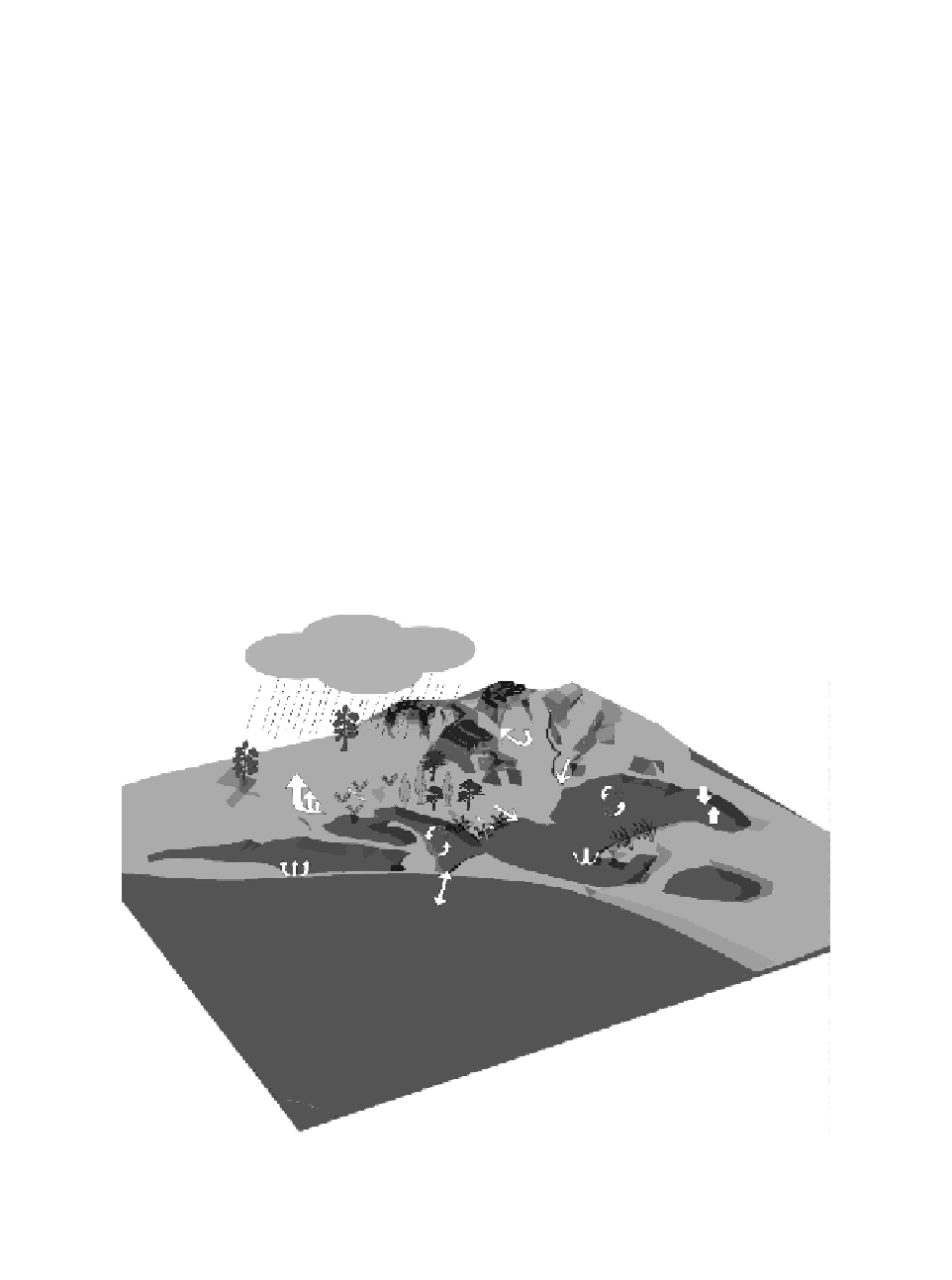Geoscience Reference
In-Depth Information
2.3.4 G
ENERAL
H
OMOMORPH
M
ODEL
FOR
L
AGOONS
When the identification process of a given lagoon system is completed, the result
should be a structural and functional model that preserves the basic structural and
functional attributes of the lagoon and its spatio-temporal relations to other eco-
systems from the land-seascape complex to which it belongs (
Figures 2.5
and 2.6).
Thus, the structural and functional or biophysical model through which a given
lagoon system is identified comprises:
1. The major components in the structure of HGMU and the trophic-dynamic
modules in the structure of biocoenose
2. The most active relationships for mass, energy, and information transfer
within the lagoon itself and between it and surrounding ecosystems
(including lower troposphere)
The network and coupled processes are continuously fueled by solar, chem-
ical, or auxiliary energy (e.g., wind and tide energy; concentrated energy in
Precipitation
Wind erosions
A
River
F
E
2
Sedimentation
Surface run-off
Evapotranspiration
E
1
Infiltration
Resuspension
Gases exchange
Turbulence
Seepage
Evaporation
E
2
C
Coastal erosion
Exchange with the sea
FIGURE 2.6
HGMU's identification of the lagoon system and its spatial relations with
ecosystems from the land-seascape complex. A = agricultural system; E, E
1
, E
2
= Ecotones;
E
1
= hedgerow and E
2
= riparian vegetation as ecotones; C = lagoon; F = Forest.


















Search WWH ::

Custom Search